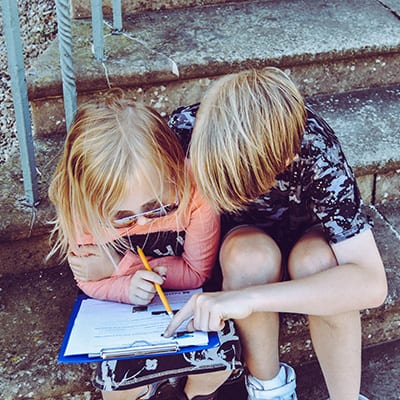Fluency Lessons Intermediate
Reading Passages (K-8)
Reading Passages (K-8) Reading Passages – Must register (free) to have access to passages. Covers reading levels kindergarten through eight grade. The passages can be used for comprehension, fluency, or about any reading skill in the Common Core State Standards. Informational and literary texts. Organized by grade or lexile. The reading passages can be used…
More...5th and 6th Grade Novel Study Units
5th and 6th Grade Novel Study Units 5th and 6th Grade Novel Study Units – These are longer units organized around a single chapter book. These units do not focus on a teaching students any one reading comprehension skill but provide an opportunity for students to practice a suite of reading comprehension skills to master…
More...Common Core Reading Lessons: Comprehension Units
Common Core Reading Lessons: Comprehension Units Comprehension Units – These research-based units facilitate close reading, precise questioning based on evidence in the text, and focused discussion to enable comprehension of the entire text. Read-aloud and paired text lessons embody the most effective research-proven instructional practices to support student comprehension. Units are based on superb, carefully…
More...Common Core Reading Lessons: Voice
Common Core Reading Lessons: Voice An author’s tone or attitude toward a subject in a text. Voice Lessons – Covers second through sixth grade. Examples: Identify and describe the author’s voice (feelings) in a poem using the title and textual evidence. Compare and contrast words and phrases in poems with different voices. Give examples of…
More...Common Core Reading Lessons: Vocabulary in Context
Common Core Reading Lessons: Vocabulary in Context The meaning of a word within a text. Vocabulary in Context Lessons – Covers kindergarten through sixth grade. Examples: Use picture cues to read unknown words. Use visual, meaning, and structure clues together to determine the meaning of a word. Use a dictionary to find the meaning of…
More...Common Core Reading Lessons: Theme
Common Core Reading Lessons: Theme The underlying message or lesson that the author is trying to convey to the reader. These often include universal values dealing with life, society or human nature. Theme Lessons – Covers second through sixth grade. Examples: Identify the plot and main idea of a story that supports the theme. Identify events…
More...Common Core Reading Lessons: Setting
Common Core Reading Lessons: Setting Where and when a story takes place. Setting Lessons – Covers kindergarten through sixth grade. Examples: Identify when and where a story takes place. Identify and describe when a story takes place using evidence from pictures, text, and clue words. Determine the implicit setting of a story using context clues…
More...Common Core Reading Lessons: Plot
Common Core Reading Lessons: Plot The structure of events that make up the main story of a text. Plot Lessons – Covers kindergarten through sixth grade. Examples: Identify and describe the problem and solution in a story. Identify and describe the story elements in a story (characters, setting, problem, solution). Identify and describe how characters…
More...Common Core Reading Lessons: Main Idea
Common Core Reading Lessons: Main Idea The big idea in a text that tells what the text is mostly about. Main Idea Lessons – Covers kindergarten through sixth grade. Examples: Identify and describe what a book is mainly about using the title, text, and pictures. Identify and describe the main idea of a nonfiction book…
More...Common Core Reading Lessons: Genre
Common Core Reading Lessons: Genre A category or type of text, organized by common literary elements. Genre Lessons – Covers kindergarten through sixth grade. Examples: Identify the difference between fiction and nonfiction. Identify facts learned from a nonfiction text. Use guide words in an encyclopedia to locate a subject. Identify the characteristics of science fiction.…
More...Common Core Reading Lessons: Figurative Language
Common Core Reading Lessons: Figurative Language Language enriched by word images and figures of speech. Figurative Language – Covers kindergarten through sixth grade. Examples: Identify and describe onomatopoeia in literature. Identify and describe hyperboles, idioms, metaphors, and similes in literature. Identify and describe puns. Presentation of Knowledge and Ideas CCSS.ELA-Literacy.SL.K.5 Add drawings or other visual displays…
More...






